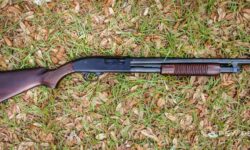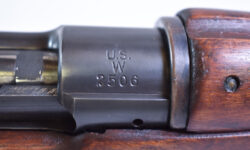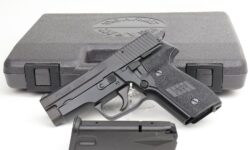WHAT TYPES OF SHOTGUN PELLETS ARE ALLOWED FOR WATERFOWL HUNTING IN THE U.S?
Waterfowl hunting is a popular off-season activity for hunters in the United States. However, never begin your game without first learning which shotgun pellets are permitted for waterfowl hunting in the United States.
In this article, you will understand everything you need to know about hunting legally and safely. Read on.
The Types of Shotgun Pellets Allowed for Waterfowl Hunting in The U.S
- Shotgun steel
- Tungsten
- Bismuth Pellets
Since 1992, many states have required the use of non-toxic shots. Due to Secretary Zonke’s perplexing perception, hunters in the United States continued to use lead bullets and lead tackle for waterfowl. Nonetheless, you can no longer do so.
Mr. Dan – the Director of the U.S. Fish and Wildlife Service – officially announced in the waning days of the Obama Administration that the use of toxic ammunition on public lands and waters was prohibited.
Lead pellets (shots) are specifically prohibited for hunting ducks, coots, geese, and other waterfowl.
In other words, hunters must use only non-toxic shots approved by the U.S. Fish and Wildlife Service, which includes the following:
- Steel pellets with a plating content of less than 1% copper, zinc, or nickel;
- Shotgun pellets made of bismuth and tin;
- Pellets of tungsten (tungsten-iron, tungsten-matrix, tungsten-polymer, and so on);
Additionally, the shot must be T-size (approximately 0.2 inch) or smaller.
Lead Shots No Longer Allowed for Waterfowl Hunting in The U.S
We understand that many people are accustomed to shooting lead pellets, which is why you are concerned about new regulations governing the types of shotgun pellets permitted for waterfowl hunting in the United States.
However, are you aware of the dangers associated with lead?
To begin, lead fragments left behind by your shots are consumed by waterfowl and other wildlife. When a lead enters the immune system of these animals, they become frail and prone to illness. They may even perish as a result of poisoning.
Then, sick waterfowls may spread the disease to other birds, posing a threat. Then, an increasing number of animals are exposed to lead-related problems. You can also become infected if you eat or come into contact with infected waterfowl.
Non-toxic Shotgun Pellets Are Allowed and Recommended
What may be deterring you from using non-toxic shotgun pellets in place of lead shots is their cost and performance. Other than that, there will no longer be any more concerns.
Indeed, non-toxic shots are more expensive but well worth the investment. They are precise and effective, requiring fewer shells to cleanly kill waterfowl. Finally, you can save money by not having to purchase new shells.
It’s understandable that you’re not an expert at shooting shotgun pellets at first, as you were accustomed to using lead shots for a long period of time.
Therefore, all you need to do is conduct additional research on modern pellets and practice more.
Ways to Use Steel, Tungsten, and Bismuth Pellets When Waterfowl Hunting
Let us examine the three shotgun pellets.
- Steel shot for ducks
Steel pellets are the most cost-effective alternative to lead shots, accounting for the majority of non-toxic shot sales.
Steel shots are less expensive than other nontoxic shotgun pellets for waterfowl due to their high content of low carbon steel. As a result, the steel pellets are frequently less dense, resulting in the bullets traveling at a slower velocity and energy. Numerous manufacturers look for ways to increase the velocity of steel shots, such as increasing their size. Nevertheless, we must acknowledge that pellets will fall short of lead shots at all ranges.
Additionally, the widespread shooting may cause damage to the barrels.
- Tungsten varieties
If you’re still unhappy with the less dense steel shots, you could try tungsten pellets. They are denser than lead alternatives but also more expensive.
Additionally, they come in a variety of varieties:
- Tungsten-matrix – They are ideal for vintage shotguns due to their similar softness to lead shots.
- Tungsten-iron – When combined with iron, tungsten shots are more abrasive than steel shots. As a result, they can deliver more pellet energy on an individual basis.
- Tungsten-polymer – These shots are made of thermal tungsten metal powder. Therefore, the pellets expand uniformly and without edge cracking.
- Bismuth
Bismuth shots, whose density is between steel and lead, are the next type of shotgun pellets permitted for waterfowl hunting in the United States. Interestingly, bismuth shots frequently include a bismuth-tin alloy to ensure the pellets are faster than the other two.
Final Words
Next time a family member or a friend of yours inquires about the types of shotgun pellets permitted for waterfowl hunting in the United States, you can now provide the details above. You can now hunt with them safely and legally since you are already aware of what should be used. [sc name=”faq2questions” q1=”The Types of Shotgun Pellets Allowed for Waterfowl Hunting in The U.S” a1=”Since 1992, many states have required the use of non-toxic shots. Due to Secretary Zonke’s …” q2=”Ways to Use Steel, Tungsten, and Bismuth Pellets When Waterfowl Hunting” a2=”Steel pellets are the most cost-effective alternative to lead shots, accounting for the majority of …” ]


